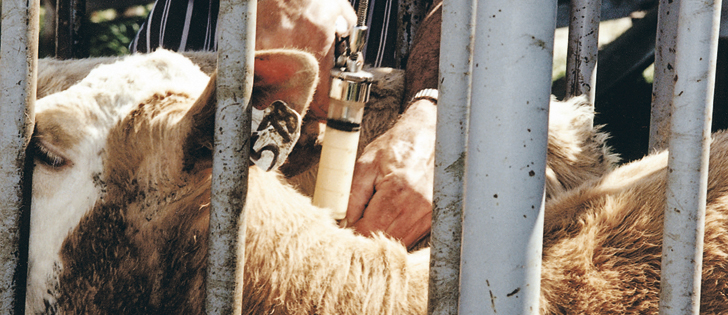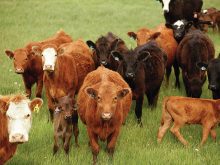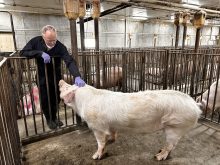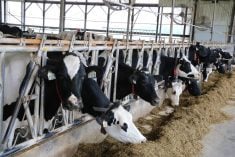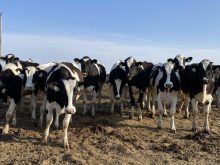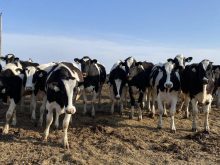In spite of good protection contained in vaccines for most clostridial diseases such as blackleg, tetanus and redwater, incidences are on the rise.
Whether we raise cattle, sheep, goats or other livestock such as bison or elk, all are susceptible to various disease forms of the clostridial organism.
As a quick review, clostridial organisms are spore-producing bacteria that live in the soil and can last for decades.
The spores are often ingested, and bruising, handling, liver damage and myriad other problems can trigger a clinical case.
Read Also

Beef check-off collection system aligns across the country
A single and aligned check-off collection system based on where producers live makes the system equal said Chad Ross, Saskatchewan Cattle Association chair.
Survival even with vigorous treatment is rare because when these bacteria multiply they release toxins. Onset is rapid and almost always fatal.
Vaccination with the multivalent clostridial vaccines (up to a nine-way) approved for dairy and beef cattle can protect animals if it is administered according to label directions.
Since there are many forms of the disease, the wider the protection the better in my opinion because you don’t know which clostridial organism you may get.
The vaccines include products such as Covexin plus, Tasvax, Ultrachoice and Vision, but they are not all the same.
Specific clostridial diseases such as redwater (prominent in the eastern slopes of the Rockies) or tetanus are not included on all vaccines so read the label if these are necessary on your farm.
The clostridial vaccines are bacterial toxoids, meaning they are the killed bacteria, and the toxins normally produced are altered to produce the toxoid that is then used to make the vaccine.
Clostridial vaccines are close to 100 percent protective if given according to label directions and in advance of the disease.
The vaccines will appear to settle out in the fridge and that is normal, so make sure and shake it gently to bring it into full solution and check expiry dates.
Most, if not all, are approved for subcutaneous use.
Many producers and veterinarians have been slack at recommending a booster dose one to two months after the original shot. This may not be possible if the animals are going out to summer pasture but it is imperative they receive their boosters as soon as they return.
Across Canada, we have seen several outbreaks in late summer to early fall when immunity from the first dose has become low.
Some pastures in the West and Ontario have high contamination of clostridial spores, which can sit dormant for decades. Soil disruptions caused by ditching, mole infestations, disc bines or animal wallows increase the risk of exposure.
Extremely dry years in which cattle graze grass closer to the ground or years after a drought may float the spores closer to the surface.
The standard vaccination protocol then should include the broad-spectrum clostridials (seven to nine way depending on your area). You should give two shots to calves and then your replacement heifers.
With immunity established, the cows are vaccinated every one to two to five years.
If redwater (clostridium hemolyticum) is present in the area, the producer may give the vaccine as often as twice yearly because immunity is shortest with this organism in the vaccines.
In pastures with high rates of clostridial incidences, it is often necessary to vaccinate and hold the cattle back to administer the second vaccine before going to pasture.
We see more incidences of clostridial disease (clostridium perfringens) in young calves as a form of scours, which is why the scour vaccines contain some clostridial organisms.
Clostridial vaccines are somewhat reactive because of the formalin-like carrier. It is not uncommon to see the odd quarter-sized to small-egg-sized lump in the animal after it is administered. This means the animal overreacted to the vaccine but these lumps are simply blemishes. Sheep and goats may react even more.
A low incidence of allergic reactions is possible every time you vaccinate, so check cattle several minutes after vaccinating and always have ephinephrine on hand.
The bottom line is to keep clostridial vaccinations up to date, which means administering them at least twice as calves and then as replacement heifers.
Vaccinate cows as frequently as necessary as determined by you and a veterinarian.
Don’t forget bulls, which I would vaccinate at semen-testing time. Your most valuable asset (your bulls) are often neglected when it comes to vaccinations.
Every time you process your cattle you should think about clostridial vaccinations. When outbreaks occur, many animals can be affected and it can be devastating.



